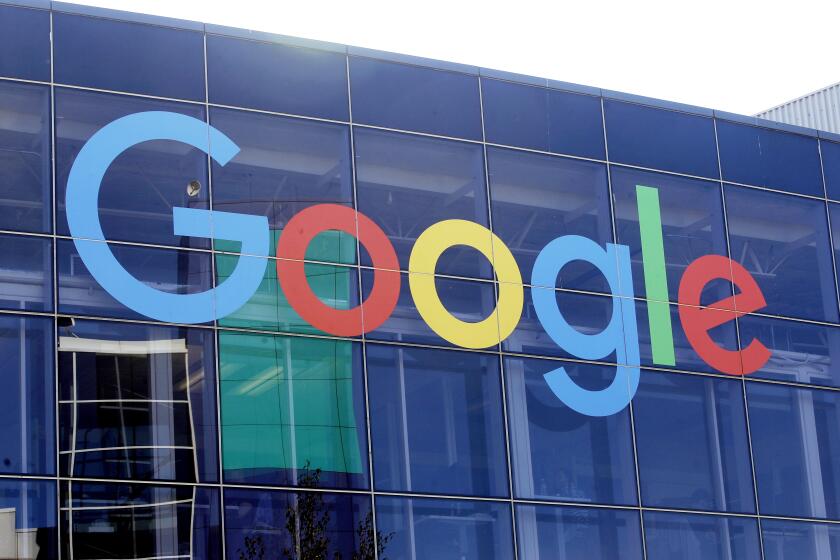Here’s why drugmakers are held in low esteem
- Share via
Are you befuddled by the cost of prescription drugs? There may be a legitimate reason.
“It’s certainly not an efficient market,” Jason Doctor, an associate professor of pharmaceutical and health economics at USC, said about prescription drug prices. “If it was, you would see only one price for each drug at drugstores, and you don’t.”
Worse, folks believe that prices for many drugs, both name-brand and generic, keep going up.
According to a recent study by Consumer Reports, one-third of patients said the cost of their usual prescription rose $39 on average over the last year. One in 10 said they’re now paying at least $100 more than they did a year ago.
Among the drugs that saw the biggest jumps in prices were treatments for common ailments such as asthma, high blood pressure and diabetes.
I asked about a dozen experts whether the drug market was rigged against consumers. The answer, surprisingly, was no. But they said there were steps that could be taken to improve things.
“I think everyone would agree that the price of many branded drugs is way too high,” said Mahmud Hassan, a healthcare economist at Rutgers University. “But we still have the cheapest generic drugs in the world.”
Well, not always.
After the price of the antibiotic doxycycline hyclate rose more than 8,000% last year, Democratic lawmakers called upon generic drug manufacturers to explain themselves. The lawmakers cited 10 drugs that had quadrupled in price.
Ralph Neas, president of the Generic Pharmaceutical Assn., responded that his organization was “disappointed” by the way some people had “mischaracterized the facts about generic drug prices.”
He said critics were focusing on only a handful of drugs and ignoring thousands of other “safe, affordable” generic meds. That’s probably true.
The experts I spoke with blamed aging production facilities and shortages of ingredients for most generic price increases.
Sometimes, though, it’s just good old-fashioned market manipulation.
Last week, the Federal Trade Commission said two drugmakers — Concordia Pharmaceuticals and Par Pharmaceutical — had colluded to jack up the price of Kapvay, a medication for attention deficit hyperactivity disorder.
Concordia agreed to stay out of the market for generic Kapvay in return for a share of Par’s revenue, the FTC said. Under the settlement, both companies agreed to end the anti-competitive practice.
“When one drugmaker pays off its rival to avoid competition, the outcome of that tainted process is predictable,” said Scott Hemphill, a professor at New York University School of Law who focuses on antitrust issues. “The price is too high, compared to the price with competition.”
Such blatant price-fixing comes amid growing consolidation among generic drugmakers, which similarly serves to boost prices because of a dwindling number of competitors.
“That’s a big factor in keeping prices high,” said Ernst Berndt, a professor of healthcare economics at the MIT Sloan School of Management. “There are fewer players in the market.”
What can be done?
The experts were unanimous in saying that if you want drug companies to invest more in research and development, you need to make the regulatory process less onerous and perhaps allow more time before a drug goes generic. The rules say a drug company gets 20 years to enjoy sole rights to a patented med.
However, the clock starts ticking with the initial patent filing, and it can take years from that point before the drug reaches consumers, narrowing the window of exclusivity.
“If brand-name manufacturers do not get their investment worth, guess what — no new drugs,” said Rosa Abrantes-Metz, an adjunct associate professor at New York University’s Leonard N. Stern School of Business. “And then who loses? All of us.”
By the same token, it can take up to two years for a company to receive approval to bring a generic version of a drug to market — even though the name-brand version already has proved itself.
“The backlog for generic approvals is in the thousands,” said Michael Noel, an associate professor of economics at Texas Tech University.
The Food and Drug Administration, therefore, needs to step up its game.
At the same time, it’s unconscionable that some drugs cost more than a house. Gilead Sciences charges more than $1,000 a pill for its hepatitis C wonder drug Harvoni. A 12-week supply costs about $95,000.
Last month, the Foster City, Calif., drugmaker reported a quarterly profit of $4.5 billion, a 23% increase from the year before.
Even if the United States didn’t follow the example of most other developed countries in limiting how much could be charged for meds, drugmakers should be required to justify their pricing before receiving final FDA approval.
It’s also time that Medicare be given the authority to negotiate prices with drugmakers. It’s simply nuts that the country’s largest health insurer lacks the same bargaining power as every private insurer.
Finally, allow Americans to buy prescription meds legally from Canadian pharmacies, where prices are often more than 50% cheaper than in the United States. Let’s see what some serious competition does for U.S. healthcare costs.
“You don’t want to discourage research into new drugs,” said Janusz Ordovar, a former deputy assistant attorney general under President George H.W. Bush. “At the same time, you want regulations to protect people. This is one of the most thorny areas of antitrust.”
David Lazarus’ column runs Tuesdays and Fridays. He also can be seen daily on KTLA-TV Channel 5 and followed on Twitter @Davidlaz. Send your tips or feedback to [email protected].
More to Read
Inside the business of entertainment
The Wide Shot brings you news, analysis and insights on everything from streaming wars to production — and what it all means for the future.
You may occasionally receive promotional content from the Los Angeles Times.











